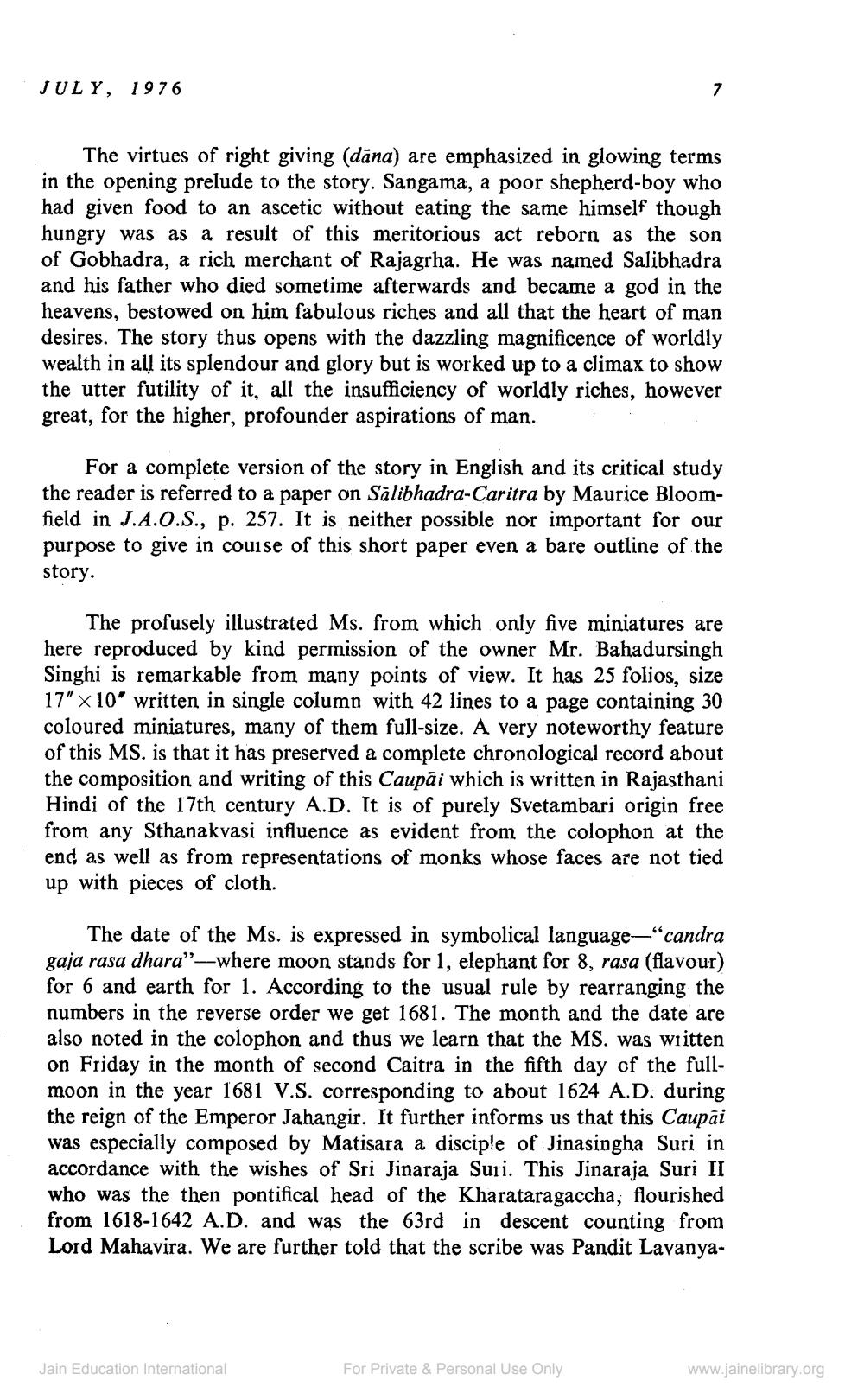________________
JULY, 1976
The virtues of right giving (dāna) are emphasized in glowing terms in the opening prelude to the story. Sangama, a poor shepherd-boy who had given food to an ascetic without eating the same himself though hungry was as a result of this meritorious act reborn as the son of Gobhadra, a rich merchant of Rajagrha. He was named Salibhadra and his father who died sometime afterwards and became a god in the heavens, bestowed on him fabulous riches and all that the heart of man desires. The story thus opens with the dazzling magnificence of worldly wealth in all its splendour and glory but is worked up to a climax to show the utter futility of it, all the insufficiency of worldly riches, however great, for the higher, profounder aspirations of man.
7
For a complete version of the story in English and its critical study the reader is referred to a paper on Salibhadra-Caritra by Maurice Bloomfield in J.A.O.S., p. 257. It is neither possible nor important for our purpose to give in course of this short paper even a bare outline of the story.
The profusely illustrated Ms. from which only five miniatures are here reproduced by kind permission of the owner Mr. Bahadursingh Singhi is remarkable from many points of view. It has 25 folios, size 17" x 10" written in single column with 42 lines to a page containing 30 coloured miniatures, many of them full-size. A very noteworthy feature of this MS. is that it has preserved a complete chronological record about the composition and writing of this Caupai which is written in Rajasthani Hindi of the 17th century A.D. It is of purely Svetambari origin free from any Sthanakvasi influence as evident from the colophon at the end as well as from representations of monks whose faces are not tied up with pieces of cloth.
The date of the Ms. is expressed in symbolical language "candra gaja rasa dhara❞—-where moon stands for 1, elephant for 8, rasa (flavour) for 6 and earth for 1. According to the usual rule by rearranging the numbers in the reverse order we get 1681. The month and the date are also noted in the colophon and thus we learn that the MS. was written on Friday in the month of second Caitra in the fifth day of the fullmoon in the year 1681 V.S. corresponding to about 1624 A.D. during the reign of the Emperor Jahangir. It further informs us that this Caupai was especially composed by Matisara a disciple of Jinasingha Suri in accordance with the wishes of Sri Jinaraja Suri. This Jinaraja Suri II who was the then pontifical head of the Kharataragaccha, flourished from 1618-1642 A.D. and was the 63rd in descent counting from Lord Mahavira. We are further told that the scribe was Pandit Lavanya
Jain Education International
For Private & Personal Use Only
www.jainelibrary.org




